
Written By: Sofia Layarda, MPH
Title: Master of Public Health
Alumni: University of California, Berkeley
Last Updated on:

In case you haven’t noticed the sea of pink around you lately, October is Breast Cancer Awareness Month. Here, we share our top picks for foods that help promote good breast health.
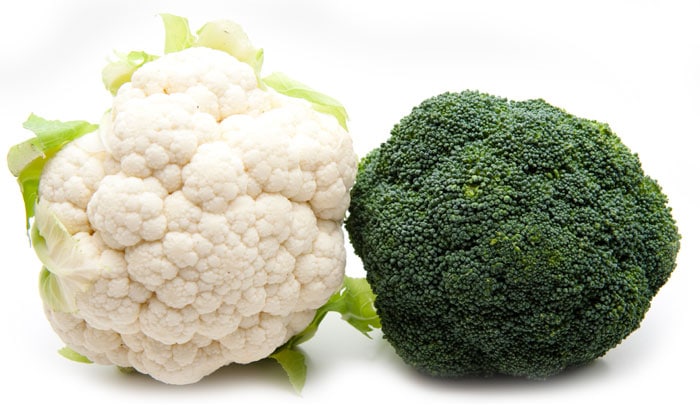
Table of Contents
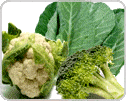 Also known as brassicas, this group of plants includes vegetables such as broccoli, cabbage, kale, collard greens, the so-called “Chinese broccoli” or gai-lan, and cauliflower. Besides being high in antioxidant vitamins (A, C, or E) and fiber, which are protective against cancer, these vegetables are full of phytochemicals called indoles and sulforaphane, which help fight cancer by increasing the body’s ability to neutralize potential toxins or carcinogens. To minimize nutrient loss, use quick cooking methods such as sauteing, or enjoy the vegetables raw with dip. If you don’t like the taste of raw brassicas, blanch them quickly in boiling water for a minute, then quickly plunge them into an ice water bath.
Also known as brassicas, this group of plants includes vegetables such as broccoli, cabbage, kale, collard greens, the so-called “Chinese broccoli” or gai-lan, and cauliflower. Besides being high in antioxidant vitamins (A, C, or E) and fiber, which are protective against cancer, these vegetables are full of phytochemicals called indoles and sulforaphane, which help fight cancer by increasing the body’s ability to neutralize potential toxins or carcinogens. To minimize nutrient loss, use quick cooking methods such as sauteing, or enjoy the vegetables raw with dip. If you don’t like the taste of raw brassicas, blanch them quickly in boiling water for a minute, then quickly plunge them into an ice water bath.
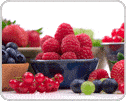 Most of us don’t need a lot of convincing to eat these tasty morsels! Berries are packed full of Vitamin C and fiber, and are a great source of phenols, powerful antioxidants that help give berries their rich, vibrant colors. The possibilities for enjoying berries are endless: eat them raw; use them to top cereals, yogurt, or salads; and use frozen ones in breakfast smoothies.
Most of us don’t need a lot of convincing to eat these tasty morsels! Berries are packed full of Vitamin C and fiber, and are a great source of phenols, powerful antioxidants that help give berries their rich, vibrant colors. The possibilities for enjoying berries are endless: eat them raw; use them to top cereals, yogurt, or salads; and use frozen ones in breakfast smoothies.
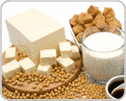 If you are a meat eater, try substituting some of your protein with plant-derived sources, such as legumes and whole soyfoods (tofu, tempeh, miso, or edamame). Skip specific soy supplements since whole soyfoods contain more than just the isoflavones alone, and the exact interactions among soy’s components are still being studied. Legumes are nutritional superstars in their own right, since they are loaded with dietary fiber and folic acid, and are full of antioxidants. Black beans, for example, are just as high in the antioxidant anthocyanins as cranberries
If you are a meat eater, try substituting some of your protein with plant-derived sources, such as legumes and whole soyfoods (tofu, tempeh, miso, or edamame). Skip specific soy supplements since whole soyfoods contain more than just the isoflavones alone, and the exact interactions among soy’s components are still being studied. Legumes are nutritional superstars in their own right, since they are loaded with dietary fiber and folic acid, and are full of antioxidants. Black beans, for example, are just as high in the antioxidant anthocyanins as cranberries
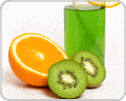 Yes, the orange – that juicy, sweet, citrusy ball of goodness – can help promote breast health. We all know about oranges’ reputation as great sources of Vitamin C, a well-known antioxidant that also helps immunity, but it turns out that oranges (and other citrus fruits) also contain a powerful anticarcinogen called limonoids. If you eat a whole orange instead of drinking the juice, you also get the added bonus of fiber, plus you get to enjoy the intoxicating aroma that’s released when you peel the fruit.
Yes, the orange – that juicy, sweet, citrusy ball of goodness – can help promote breast health. We all know about oranges’ reputation as great sources of Vitamin C, a well-known antioxidant that also helps immunity, but it turns out that oranges (and other citrus fruits) also contain a powerful anticarcinogen called limonoids. If you eat a whole orange instead of drinking the juice, you also get the added bonus of fiber, plus you get to enjoy the intoxicating aroma that’s released when you peel the fruit.
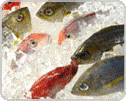 There are two main reasons oily fish appears to help promote good breast health: they’re high in omega 3 fatty acids, and they contain lots of Vitamin D. A 2009 review in the European Journal of Cancer points to the omega 3 fatty acids from fish as having potent antiangiogenic effects, which means they stop blood vessels from growing within a tumor. A 2009 study in the journal Cancer Epidemiology, Biomarkers & Prevention showed that Vitamin D levels were inversely associated with the risk of breast cancer: the lower the Vitamin D level, the higher the risk of breast cancer. Which oily fish should you eat? To minimize exposure to mercury, choose those that are lower on the food chain, such as anchovies, herring, mackerel, or sardines.
There are two main reasons oily fish appears to help promote good breast health: they’re high in omega 3 fatty acids, and they contain lots of Vitamin D. A 2009 review in the European Journal of Cancer points to the omega 3 fatty acids from fish as having potent antiangiogenic effects, which means they stop blood vessels from growing within a tumor. A 2009 study in the journal Cancer Epidemiology, Biomarkers & Prevention showed that Vitamin D levels were inversely associated with the risk of breast cancer: the lower the Vitamin D level, the higher the risk of breast cancer. Which oily fish should you eat? To minimize exposure to mercury, choose those that are lower on the food chain, such as anchovies, herring, mackerel, or sardines.
Nutrition-savvy folks will recognize that many of these foods are also helpful in promoting good cardiovascular and digestive health, among other things. So enjoy them all, since they are superstars not just for your boobs, but for your overall health!
Alumni: University of California, Berkeley – Sofia believes in bringing back fun and pleasure into everyday eating. She loves cooking, and is constantly experimenting with ingredients, creating recipes and trying them out on family and friends. Her latest interest lies in finding realistic and practical ways of environmentally-friendly food/eating habits.
berries, breast health, citrus, fish, soy, women